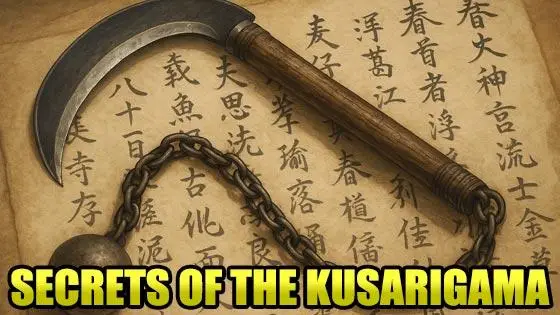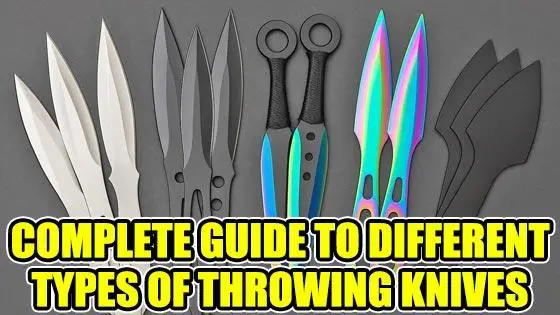Ninja Swords (Ninjato)
Unlike the samurai, who fought openly on battlefields, ninja were spies and saboteurs. They scaled castle walls, infiltrated enemy camps, and vanished into the night. A traditional katana would have been a liability for that kind of work. The ninja sword, often referred to as a ninjitsu sword, was designed to match the ninja's unorthodox tactics. Many had a squared tsuba that could double as a step when the sword was sheathed and propped against a wall. A lot of scabbards were extra long so they could hide maps, powders, or blow darts. Function came first, but intimidation wasn't far behind.
There's a lot of debate about the origins of ninjato swords, mostly because historical ninja didn't leave behind neatly labeled gear. You're not going to find a 16th-century museum piece labeled "authentic ninja sword." But what we do know is that the design most people associate with the ninjato today (straight blade, short length, square guard), likely came from a mix of practical field use and martial arts schools like Bujinkan that formalized ninjitsu in the 20th century.
At KarateMart.com, we stock a wide range of ninjatos for serious martial artists, collectors, and anyone who appreciates the history behind the weapon. One of our most popular sets includes a black full-tang ninjato sword with a tanto tip and a matching set of kunai tucked into the scabbard. Another customer favorite is the tactical ninja sword with a carbon steel blade and paracord-wrapped handle. It's rugged, fast, and surprisingly comfortable in the hand.
A lot of modern martial artists are now training with straight-bladed ninja swords instead of curved katanas. The techniques are slightly different. There's less focus on long sweeping cuts and more on precision, direct movement, and adaptability. Schools that teach ninjitsu often use ninjato swords to reinforce this mindset. These blades are about efficiency. Fast draw, fast strike, fast escape.
There was even a story in the news a while back where a man dressed in full ninja gear attacked two soldiers with a sword on a California base. The bizarre part? The guy had no military experience. He just showed up in the middle of the night with what looked like a real ninjato, swinging like he'd trained for years. It was one of those strange cases that reminded people just how iconic the ninja sword silhouette has become. The moment you see that straight black blade, you know exactly what it is.
If you're looking for something unique, we've also carried dual ninjato sword sets in contrasting colors, as well as pieces with stylized tsubas shaped like shuriken or clan symbols. These are real swords with full-tang construction, solid steel, and materials that hold up during training. Whether you want something compact like a 22-inch blade for quick draws, or a full-size ninjato with a thick spine and reinforced tip, we've got it.
And if you're just getting into martial arts or collecting, don't worry. We're not here to sell you the same recycled junk you've seen everywhere else. We hand-pick each ninjato sword in our collection based on durability, balance, and accuracy to the historical (and cinematic) look people expect from ninja weapons. We even test many of them ourselves, and we're not shy about saying when something feels off.
So whether you're training in traditional ninjitsu, building out your dojo, or just want a ninja sword that actually looks and feels right, KarateMart has the real deal.
What's the difference between a ninja sword and a katana?
The main difference between a ninja sword (often called a ninjato) and a katana lies in their shape, purpose, and the warriors who used them.
A katana is the traditional long, curved sword associated with the samurai class in feudal Japan. These blades were typically around 40 inches in total length, with a distinct curve that made them ideal for powerful slicing cuts from horseback or in open combat. Katanas were made using advanced forging techniques like differential heat treatment and clay tempering, which created a hard edge and a softer spine. The resulting hamon, or temper line, became a mark of both craftsmanship and status.
In contrast, the ninja sword, or ninjato, was a weapon of necessity. It usually had a straight blade and was often shorter than a katana, generally in the 24 to 28 inch range for the blade itself. This made it quicker to draw in confined spaces, especially when worn horizontally across the back or at an angle on the hip. The straight design also allowed the scabbard to double as a storage compartment for powders, small tools, or even blinding substances like ash or ground pepper.
The square guard (tsuba) on many ninjato had practical value as well. Some ninja reportedly used the sword, when sheathed, as a makeshift step to help scale walls. The flat end of the scabbard could be planted into the ground or against a structure, turning the sword into a footstool. This reflected the ninja's creative use of every tool they carried.
Historically, there is limited physical evidence that ninjato existed in a standardized form during Japan's Sengoku period. Most historians believe that the modern concept of the ninja sword is a reconstruction, developed through martial arts schools like Bujinkan in the 20th century and popularized by movies and television. However, the lack of formal records actually fits the secretive nature of ninja activity. Ninjas were not officially recognized like the samurai. They worked in the shadows, often leaving behind very little in the way of documented weapons or armor.
It's also worth noting that ninja were often peasants or lower-ranking samurai, and they may have used whatever blades they had access to, including broken or shortened swords. Some accounts suggest they intentionally dulled one edge of the sword to prevent injury while climbing, or even used blades made of iron instead of higher-grade steel to avoid glare in the moonlight.
While the katana represented honor and tradition, the ninjato represented utility and adaptability. It was never about elegance. It was about survival.




























